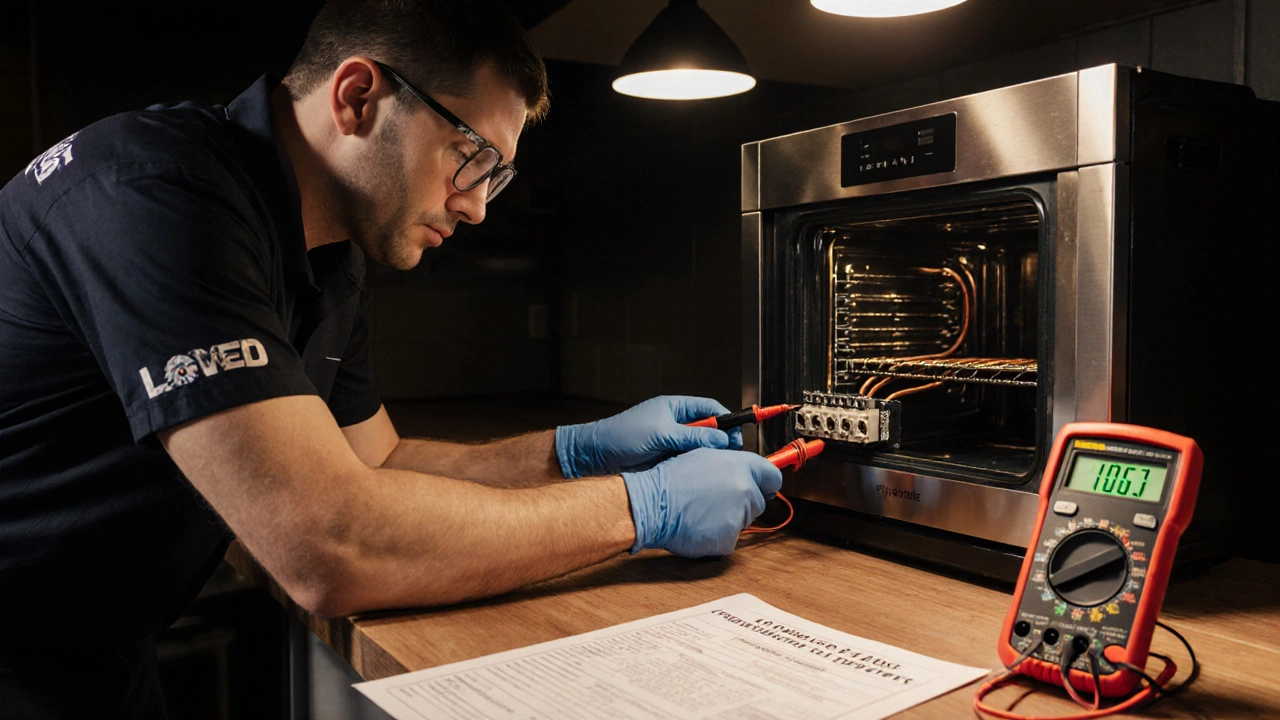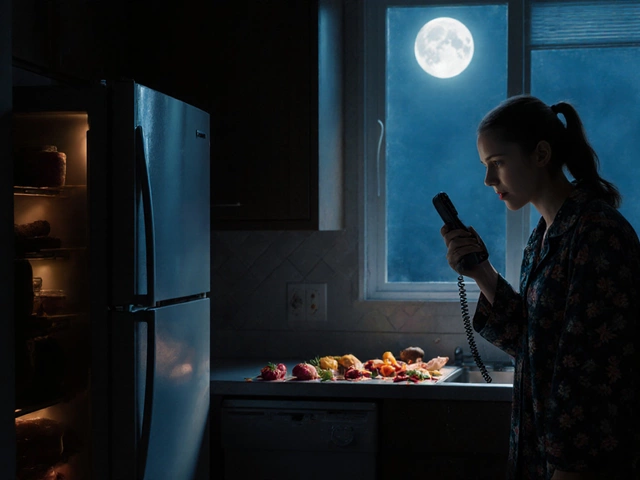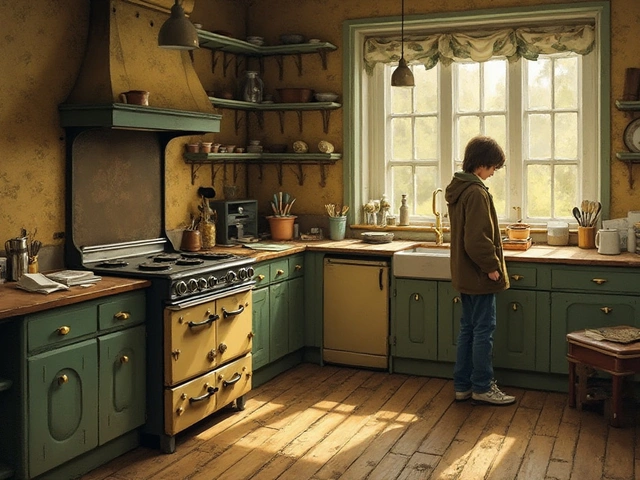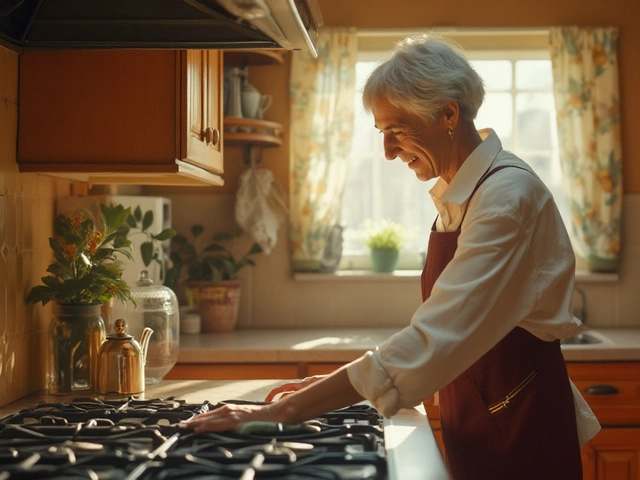Oven Safety Check Calculator
Is Your Oven Replacement Safe?
Enter your oven specifications to check if you can legally and safely replace it yourself in Australia. Remember: In Australia, all electric ovens over 10 amps must be installed by a licensed electrician.
Enter your oven specs to see results
Most people think replacing an electric oven is just a matter of unplugging the old one and plugging in the new one. But if you’ve ever looked behind your oven and seen a thick, bare wire running into the wall, you know it’s not that simple. In Australia, electric ovens don’t plug in like a toaster. They’re hardwired directly into your home’s electrical system. And that changes everything.
Why You Can’t Just Unplug and Swap
Your electric oven runs on 240 volts, not the standard 230 volts used by most household appliances. That means it needs its own dedicated circuit, usually with a 32-amp breaker. The wiring is thick - often 6mm² or 10mm² copper - and connected directly to a terminal block behind the oven. There’s no plug. No socket. Just bare wires.
When you buy a new oven, it doesn’t come with a power cord. You’re expected to wire it yourself or hire someone who knows what they’re doing. This isn’t a design flaw - it’s a safety rule. Ovens draw a lot of power. A loose connection can overheat, melt insulation, or even start a fire.
In Brisbane, the Electrical Safety Act 2002 and AS/NZS 3000:2018 (the Wiring Rules) say that any fixed appliance over 10 amps must be installed by a licensed electrician. Electric ovens? They’re typically 15-30 amps. That means, legally, you can’t do it yourself.
What Happens If You Try It Anyway?
Some people do it anyway. They watch YouTube videos, buy a multimeter, and think they’re ready. But here’s what usually goes wrong:
- They mix up the active, neutral, and earth wires - and accidentally energize the oven’s metal casing. One touch, and you’re in serious danger.
- They use the wrong cable size. A 2.5mm² cable might work for a kettle, but it’ll overheat under an oven’s load.
- They don’t isolate the circuit properly. Someone flips the breaker back on while they’re still inside the wall.
- They forget to ground the oven. No earth connection means no safety path for a fault current.
There’s a real case from 2024 in the Gold Coast where a homeowner rewired their oven without turning off the main power. The live wire touched the metal frame. The oven sparked, melted the surrounding cabinetry, and triggered the smoke alarm - but not before the heat warped the quartz countertop. Insurance wouldn’t cover it because the work wasn’t done by a licensed electrician.
What You Can Legally Do Yourself
You’re not completely powerless. There are things you can handle safely:
- Turn off the circuit breaker. Double-check with a non-contact voltage tester. Don’t assume the breaker is off - test it.
- Remove the old oven. Unbolt it from the cabinetry, pull it out, and clear the space. That’s fine.
- Measure the cutout. New ovens vary in size. Measure height, width, depth, and the position of the mounting brackets. Write it down.
- Check the power requirements. Look at the nameplate on the old oven. Does the new one need the same voltage, amperage, and circuit type? If not, you’ll need an electrician to upgrade the circuit anyway.
- Prepare the space. Clean the area, check for water damage or rodent nests in the wiring. Fix those issues if you can.
But once you get to the wires? That’s the line. You can’t legally connect them yourself in Australia.

How Much Does a Professional Replacement Cost?
In Brisbane, hiring a licensed electrician to remove your old oven and install a new one usually costs between $250 and $450. That includes:
- Turning off and isolating the circuit
- Disconnecting and safely capping the old wiring
- Installing the new oven’s terminal block
- Connecting the correct cable size and securing all connections
- Testing for earth continuity and correct polarity
- Providing a Certificate of Electrical Safety (CES)
The CES is important. If you ever sell your home, buyers and inspectors will ask for proof that major appliances were installed legally. Without it, you could be stuck fixing it later - or worse, your sale could fall through.
Some appliance stores offer installation packages. But check what’s included. Some only deliver and unbox the oven. Others charge extra for wiring. Always ask: “Does this include a licensed electrician to hardwire the oven?”
When You Might Need More Than Just a New Oven
Older homes often have outdated wiring. If your house was built before 1990, your oven circuit might be on a 15-amp breaker with 2.5mm² cable. That’s not enough for a modern 7.5kW oven.
You might also find:
- No earth wire - common in pre-1970s homes
- Aluminum wiring - a fire hazard if not properly terminated
- A shared circuit - the oven and dishwasher on the same breaker
In these cases, replacing the oven isn’t just about swapping units. You need a full circuit upgrade. That means running new cable from your switchboard, installing a 32-amp breaker, and possibly upgrading your main panel. That’s a job for a licensed electrician - and it’ll cost $800-$1,500.
Don’t assume your old wiring is fine just because it “worked before.” Electrical standards changed for a reason. What was acceptable in 1985 isn’t safe today.

What to Look for in a New Oven
Before you buy, check these specs:
- Power rating: Look for kW (kilowatts). Most modern ovens are 2.5-7.5kW. Higher power means faster heating - but also higher circuit demands.
- Circuit requirement: The manual should say “Requires dedicated 32A circuit.” If it doesn’t, walk away.
- Terminal block: Some ovens come with a pre-wired terminal block. Others don’t. Make sure you know which you’re getting.
- Dimensions: Measure your cutout. Standard sizes are 595mm wide, 595mm high, and 560mm deep - but many are not.
- Brand compatibility: Some brands (like Bosch or Miele) use proprietary mounting systems. Make sure your cabinetry supports it.
Don’t buy based on price alone. A $400 oven might need a $1,200 electrical upgrade. A $1,200 oven might plug right in. Think long-term.
What to Do If Your Oven Breaks
If your oven dies and you’re tempted to DIY the replacement, ask yourself:
- Do I have a license to work on fixed wiring in Queensland?
- Do I know how to test for earth continuity with a multimeter?
- Do I have a Certificate of Electrical Safety to show future buyers?
- Will my home insurance cover damage from unlicensed electrical work?
If you answered “no” to any of those, don’t risk it. The cost of hiring an electrician is small compared to the cost of a house fire, an insurance claim denial, or a failed property inspection.
Most electricians in Brisbane can do the job in under two hours. Book a slot, turn off the power, and let them handle the rest. It’s cheaper than you think - and infinitely safer.
Can I replace my electric oven myself in Australia?
No. Under Australian law, replacing a hardwired electric oven requires a licensed electrician. Ovens draw more than 10 amps and are permanently connected to your home’s electrical system. DIY installation is illegal and dangerous.
Why can’t I just plug in a new oven like a toaster?
Because electric ovens need 240 volts and high current (15-30 amps). Plugs and standard sockets can’t handle that safely. Hardwiring ensures a secure, stable connection that won’t overheat or come loose over time.
What happens if I install it myself and get caught?
If an inspector finds unlicensed work during a home sale or insurance claim, you may be forced to pay for a licensed electrician to redo it. Your home insurance may also deny claims related to electrical fires caused by DIY work.
Do I need a Certificate of Electrical Safety?
Yes. In Queensland, any fixed appliance over 10 amps requires a Certificate of Electrical Safety (CES) after installation. This document proves the work was done legally and safely. It’s required for home sales and insurance purposes.
How much does it cost to have a professional replace my oven?
In Brisbane, expect to pay $250-$450 for a licensed electrician to remove your old oven and install a new one. This includes disconnecting old wiring, connecting the new oven, testing safety features, and providing the Certificate of Electrical Safety.
Can I upgrade my oven without upgrading the wiring?
Only if your existing circuit matches the new oven’s requirements. Check the kW rating and amperage on the new oven’s nameplate. If it’s higher than your old one, or if your wiring is undersized (like 2.5mm² cable), you’ll need an upgrade. Older homes often need new circuits.





